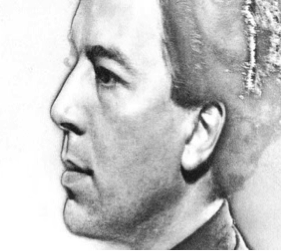 Andre Breton was the French founder of surrealism, a revolutionary movement which began in the 1920s aiming to blur the lines between reality and dreams, allowing free-form expression of ideas. He moved away from Dadaism, which itself began during World War One as an irrational, nonsensical expression of anti-war rhetoric. Along with Louis Aragon and Phillippe Soupault, Breton co-founded a journal called Littérature to showcase the first surrealist automatic writing. His definition of surrealism was summed up as:
Andre Breton was the French founder of surrealism, a revolutionary movement which began in the 1920s aiming to blur the lines between reality and dreams, allowing free-form expression of ideas. He moved away from Dadaism, which itself began during World War One as an irrational, nonsensical expression of anti-war rhetoric. Along with Louis Aragon and Phillippe Soupault, Breton co-founded a journal called Littérature to showcase the first surrealist automatic writing. His definition of surrealism was summed up as:

He was born in 1896 in Tinchebray, Northern France. He studied medicine and psychiatry and showed a particular interest in mental illnesses. During WW1 he worked in neurological wards in Nantes and no doubt this experience laid the foundations for his theories on the concept of the unconsciousness. He married Simone Kahn in 1921 and while they lived in Paris he amassed a massive collection of artwork, photographs and books. He went on to marry a further two times. His Surrealist Manifesto, the first of three, was produced in 1924. This explained his definition of surrealism and sought to highlight the importance of dreams and the merging of realities in an absurdist way. Breton credited several contemporaries in the work including Louis Aragon, Paul Eluard and others. His second Manifesto came in 1930 but the third was never published. After writing his Manifestos he published poems and novels throughout the 1920s and 30s. His most acclaimed novel, from 1928, is Nadja, believed to be a semi-autobiographical story of his relationship with a mad woman who was a patient of Pierre Janet. It begins with the question “Who Am I” and ends with “beauty will be CONVULSIVE or will not be at all.”
The surrealist movement relied on, among other things, the work of Karl Marx and in keeping with his admiration of Marx’s philosophies, Breton was a member of the French Communist Party from 1927 to 1935. He left the party in protest at its support for Joseph Stalin but remained committed to the cause of communism. In 1938 in Mexico he and Leon Trotsky together wrote the Manifesto for an Independent Revolutionary Art, said to be the most forceful expression of the collaboration of art and revolutionary Marxism. It explained “the communist revolution is not afraid of art.”
At the start of the 1940s Breton had returned briefly to work in the medical wards in French hospitals but when the Nazis invaded and occupied France he fled to America along with his friends Marcel Duchamp and Max Ernst. He lived in New York City at this time, writing his third Surrealist Manifesto and managed a Surrealist exhibition at Yale in 1942.
He returned to Paris after the war and published three books of poetry, Arcane 17, in 1945, and a further Surrealist work in 1953 called The Key to the Fields. He also mentored young surrealist writers and artists.
Andre Breton died in Paris September 28th 1966.

